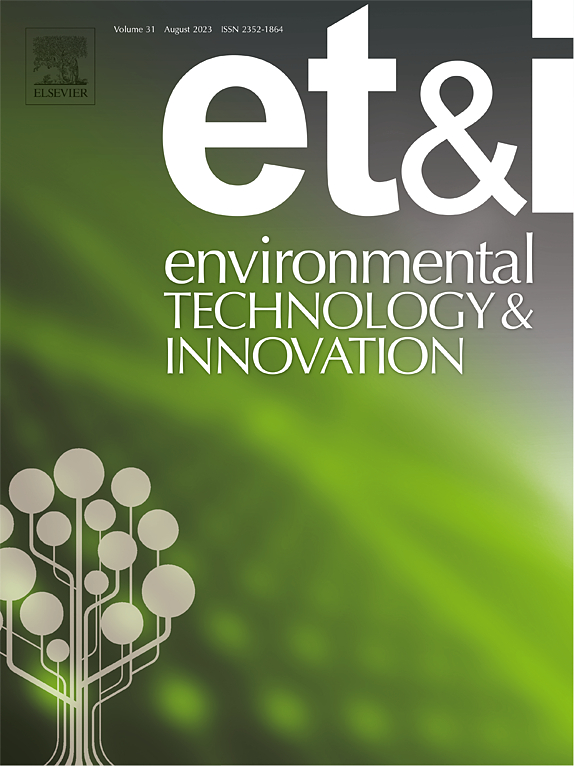Comprehensive feasibility analysis of carbon dioxide hydrate sequestration: A numerical study based on horizontal well networks
IF 6.7
2区 环境科学与生态学
Q1 BIOTECHNOLOGY & APPLIED MICROBIOLOGY
引用次数: 0
Abstract
Carbon dioxide sequestration is a crucial strategy for achieving carbon neutrality. This study explores a novel approach to carbon dioxide storage in marine environments in the form of hydrate, addressing the stringent site requirements of traditional geological storage methods. Using a custom-developed simulator, a conceptual model for carbon dioxide sequestration in subsea reservoirs under a horizontal well network configuration was constructed. Key factors, including seawater depth, injection depth, and well spacing, were analyzed through simulations to quantify carbon dioxide storage capacity and assess associated risks under various sequestration scenarios. The results indicate that increasing seawater depth boosts both CO₂ storage capacity and safety, while deeper injection enhances safety but reduces hydrate storage capacity and raises leakage potential. Closer well spacing improves early-stage safety but increases long-term risks. The study outlines distinct sequestration stages and provides detailed analyses of CO₂ migration and phase transformations over time, contributing insights for advancing CO₂ sequestration strategies.
求助全文
约1分钟内获得全文
求助全文
来源期刊

Environmental Technology & Innovation
Environmental Science-General Environmental Science
CiteScore
14.00
自引率
4.20%
发文量
435
审稿时长
74 days
期刊介绍:
Environmental Technology & Innovation adopts a challenge-oriented approach to solutions by integrating natural sciences to promote a sustainable future. The journal aims to foster the creation and development of innovative products, technologies, and ideas that enhance the environment, with impacts across soil, air, water, and food in rural and urban areas.
As a platform for disseminating scientific evidence for environmental protection and sustainable development, the journal emphasizes fundamental science, methodologies, tools, techniques, and policy considerations. It emphasizes the importance of science and technology in environmental benefits, including smarter, cleaner technologies for environmental protection, more efficient resource processing methods, and the evidence supporting their effectiveness.
 求助内容:
求助内容: 应助结果提醒方式:
应助结果提醒方式:


